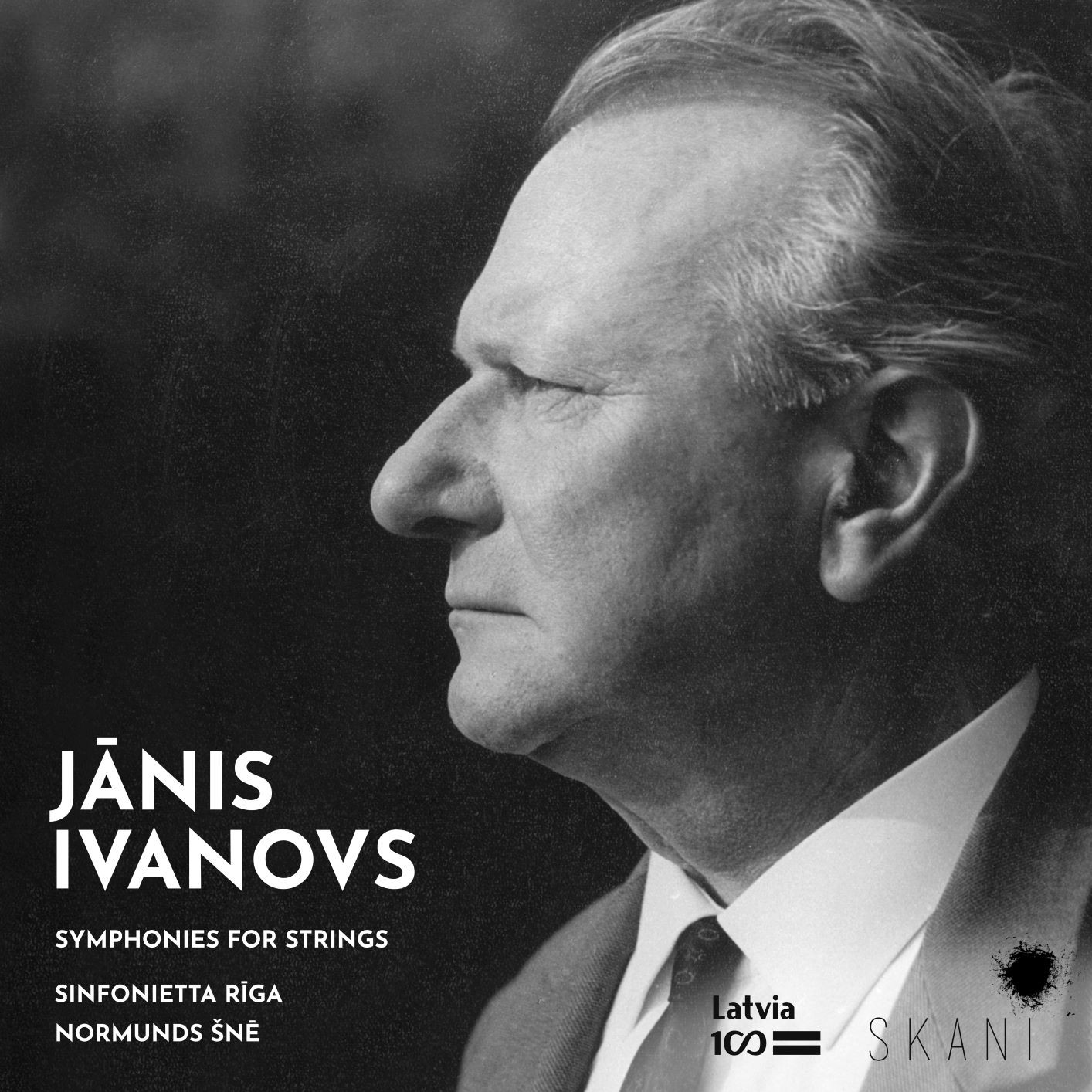Without a doubt, Janis Ivanovs is the most significant and prolific Latvian symphonist of the second half of the 20th century. He completed twenty symphonies in all, with No. 21 unfinished at the time of his death in 1983. It was left to Juris Karlsons to make a completion. At the start of the First World War his family fled to Russia, only returning when hostilities ended. Ivanovs enrolled at the newly established Latvian Conservatory in 1924, studying conducting with Georg Schnéevoigt and composition with Jāzeps Vītols. He himself was a professor of composition there from 1944 until his death. Aside from that, he also had a job as a sound engineer in the 1930s, and for many years was artistic director of Latvian Radio.
All the works featured here are for strings alone, and date from the mid-sixties to the mid-seventies. It was a fruitful time for the composer, when the country’s musical life was no longer constrained by Soviet imposed ‘social realism’. From 1948-1958 composers had been held back, now there was a social and political ‘thaw’. This opened the floodgates for free creative expression. Ivanovs now ventured into areas he had previously avoided. From now on polytonality and polyharmony gave him license for greater expressive scope, and an angularity crept into his music. Rhythmic freedom also became a feature. In some ways, a ‘harsh style’ entered Latvian music.
Poema "Luttuoso" of 1966, the earliest work here, was born out of a friendship with Miervaldis Birze (1921-2000), an author and physician. Birze had been held in the Nazi concentration camp of Salaspils on the outskirts of Riga, and was later transferred to the Buchenwald camp in Germany. In this symphonic poem, Ivanovs reflects on the immense suffering experienced in the camp, and dedicated it to all the victims of Salaspis. He expresses the pain and torment through polyphony, polytonality and tortuous chromatic harmonies. The work is a tautly-etched canvas, potent in its harsh crushing dissonances. The opening is quite sinister and, as the music progresses, it becomes barbed and unsettled. Midway, there’s a powerful section on the cellos, where they express total desolation, overwhelming sadness and hopelessness.
Ivanovs composed his Symphony No. 14 ‘Sinfonia da camera’ in 1971. It's in three movements. The chill and desolation of the first movement extends into the second, marked Andante. A solo violin enters the stage about four minutes in, a lonely, isolated voice. The music is ratcheted up a gear in the finale, where the wintry nip makes way for some welcome heat. A more dated radio recording of the work, yet equally fine, can be found on Skani LMIC035 which I reviewed several months ago.
The three–movement Sinfonietta, dedicated to youth, was written in 1977, and Sinfonietta Rīga perform it with great ardour and zeal. The opener sounds neo-classical in style, spiky, angular and, at times, strident. An introspective Andante tranquillo sits centre stage, where the basses are an enduring and commanding presence. The movement seems to have an air of lament about it. Vivacious and bustling, the third movement sounds confident, and Ivanov’s skilled way with counterpoint shows considerable fluency. At the end, the restless momentum dissipates – an effective touch.
These nicely recorded performances could find no better advocates than the Sinfonietta Rīga under the inspirational direction of Normunds Šnē.
Stephen Greenbank
Simfonijas kamerorķestrim
Izpildītāji
Sinfonietta Rīga
- kamerorķestris
Normunds Šnē
- diriģents
Sērija
Simtgade
Ieraksts
2018
Izdošanas datums
05.10.2018
Skaņdarbi
Apraksts
LMIC 068
"Mūzika, kas dzimusi bagātas iekšējas pasaules ieskauta un iedvesmota.
Mūzika, kuru radījis ārkārtīgi jutīgs un trausls milzis.
Mūzika, kurai pieskaroties, ikvienam tiek uzdots daudz vairāk jautājumu, nekā sniegtas atbildes uz tiem.
Mūzika, kurā domu impulsi saskaroties uzliesmo; dzirksteļo, tad dziest, ļaujot atgūties un ieelpot sasprindzināto atmosfēru. Tomēr nekad neatdziest, nekad nekas te nav remdens.
Mūzika, kas risina savu laiku ietilpīgi un bez kompromisiem.
Radīšanas vieglums nav prioritāte, iekšējā patiesības balss – tā gan.
Mūzika, par kuru tik daudz ko gribētos pajautāt komponistam…"
Normunds Šnē
Kritika

